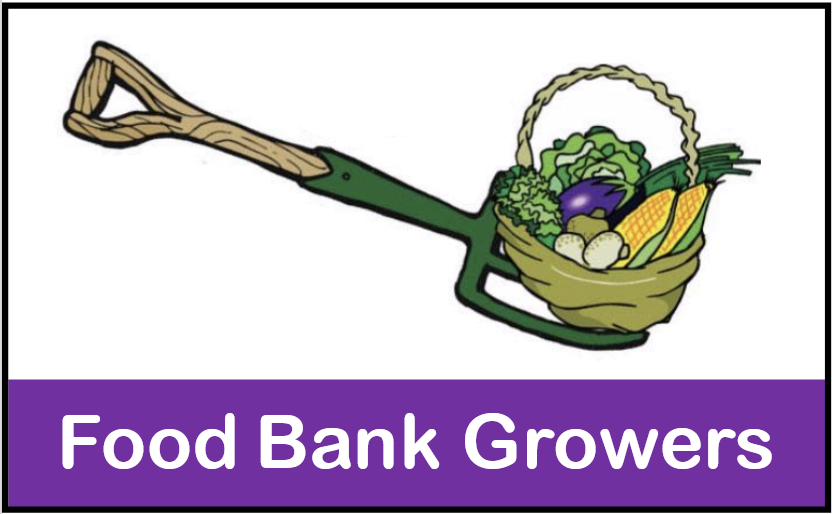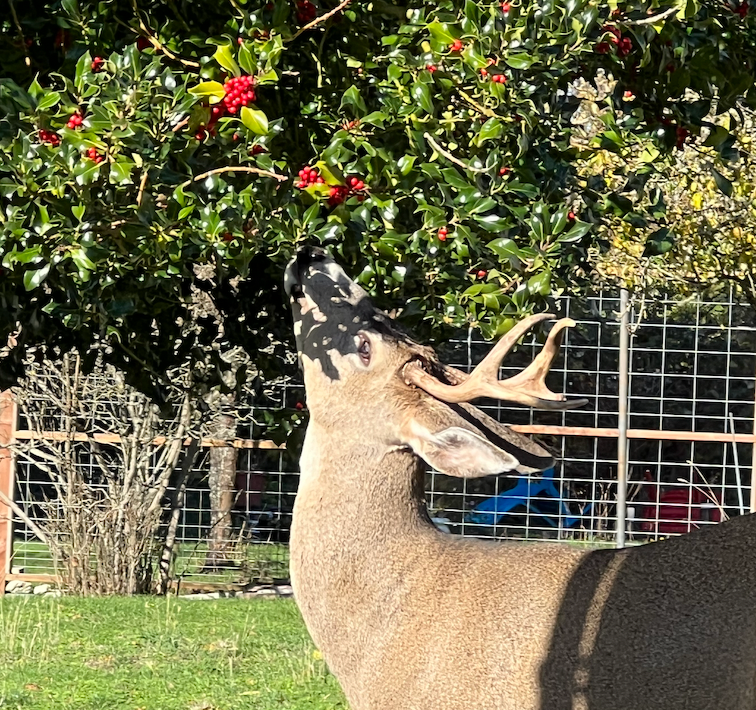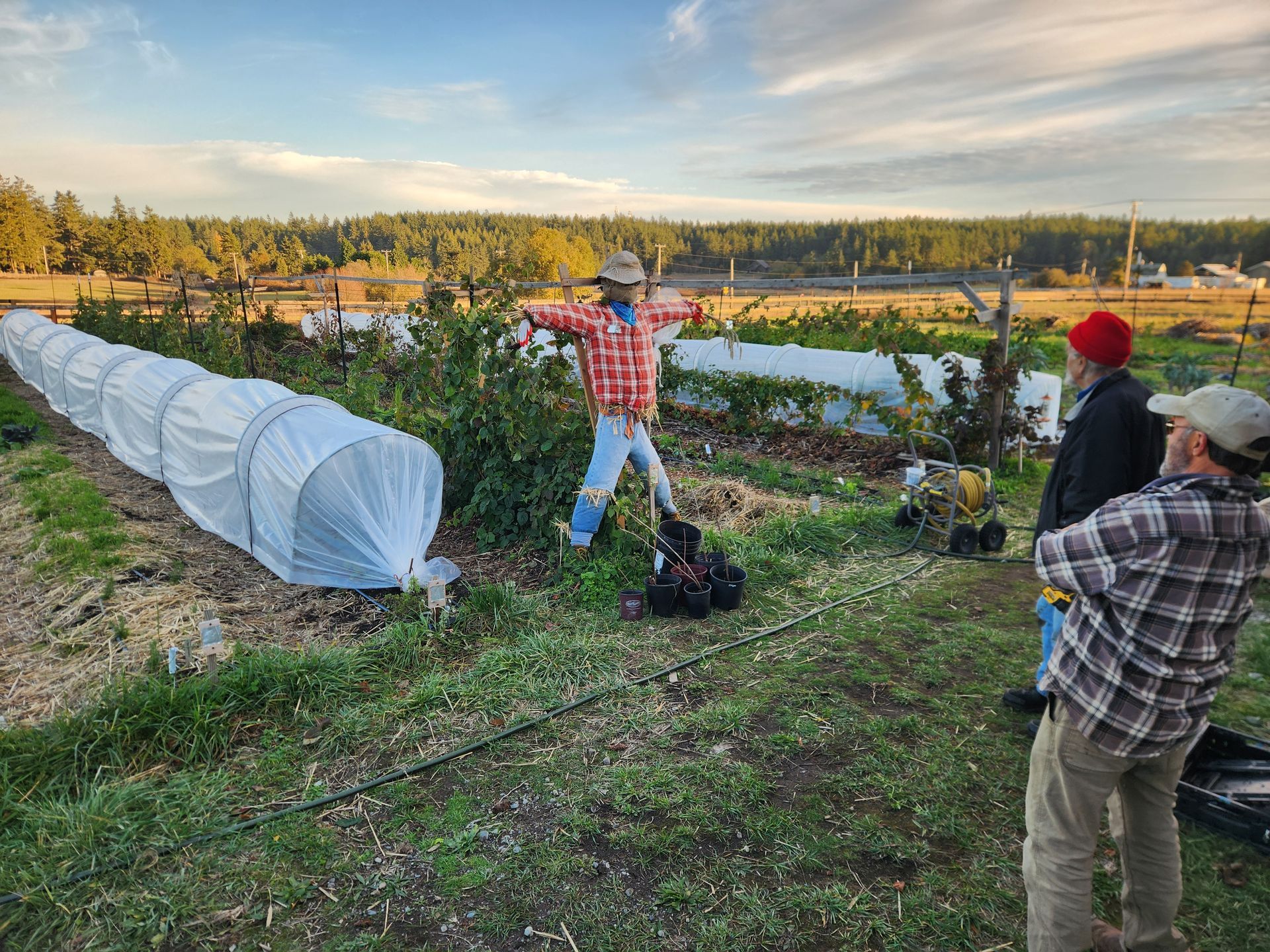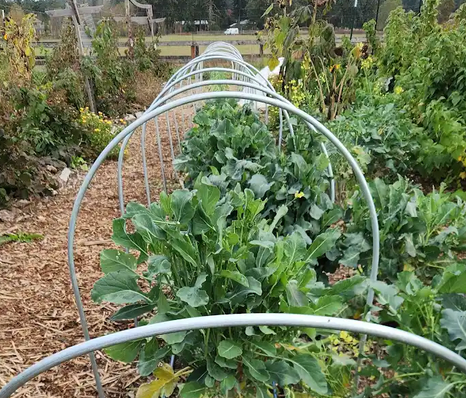Newsletter June 2024
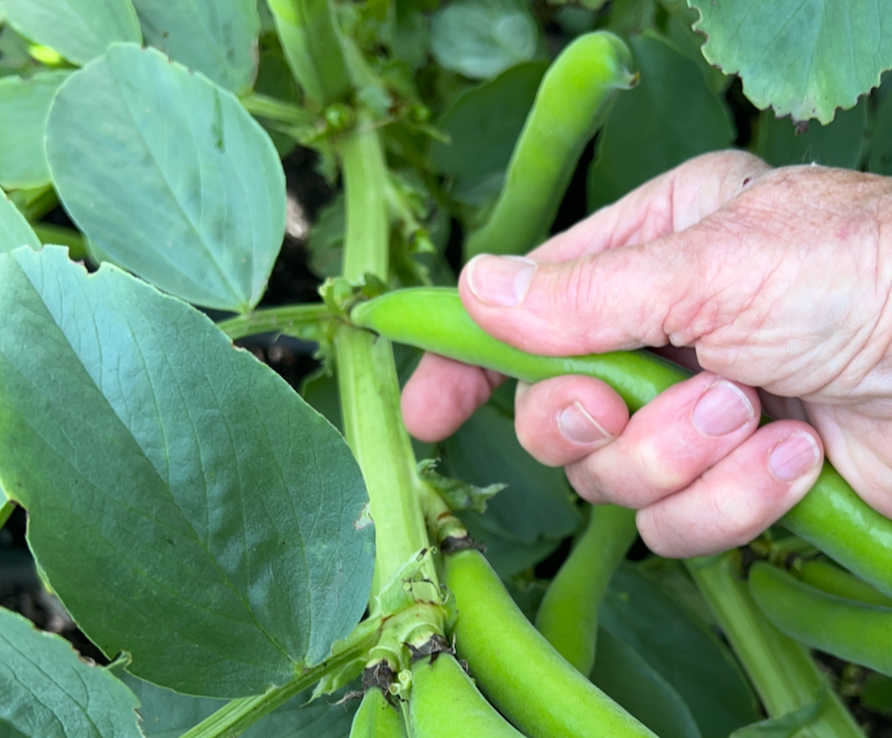
Gardens leap into production
2024 Year-to-Date Harvest, Hours, and Starts
1122.9 - Pounds of fresh veggies
1617 - Volunteer Hours
810 - Veggie Plant Starts (to grow your own)
Fresh salads, herbs, along with last year’s plantings of carrots and onions are filling our baskets.
NEW Postings on FoodBankGrowers.org
Plant Sale Report
Thank You Anders and Nancy Edgerton
Measuring Regenerative Results
FairWinds Food Bank Garden Starts to Grow
June in the Garden
June gloom or Junuary are two common names to describe this month. The first week is certainly looking like classic Junuary. We can have temperatures from the mid 40’s to the upper 90’s but our average is between a high of 65° and a low of 51° F. It is looking like our lows will be lower than average and our highs right on average for the next couple of weeks. We are transitioning from El Nino to La Nina over the next two months so our weather could be a bit unpredictable. Plan”t” to adapt.
Winter Gardening:
Yup it is time to start thinking and planting for fall and winter harvests. Overwintering veggies can be harvested in the early spring when they are really appreciated. Doing starts now requires us to pay attention to the upper temperature tolerances for germinations. Many seed catalogs and packages give a range of temperatures. Lettuce likes it cool (under 70°F) so find a shady place to start it. Many Brassicas need to be kept below 75° or they will just decompose. All these plants still need light but natural sunlight should be enough this time of year. Watering is also very important as the warmer temperature and lower humidity starts dry out more quickly.
Look through your garden and see what you will be pulling out next month. Garlic is usually pulled in July so that will open up some space. Many peas slow down their production in July as well. Early lettuce and cool season spinach can also be replaced as we move into warmer temperatures. Remember to add nutrients between plantings like an extra inch or compost and a sprinkling of a good fertilizer.
Planting:
- This is also a great time for those who haven’t finished getting their spring garden in to just go ahead and get started on planting. We can still plant all our spring “quick” growing crops. Just look for cooler shady locations like on the north side of the corn or pole beans.
- This is also the time to put in our squash and cucumbers.
- Now is when our bulb onions will start putting energy into their bulbs. But we can still plant pearl onions and bunching onions.
- Many plants can be direct sown right now. If it remains cool you might want to cover your directly sown seeds with cloches or a floating row cover to increase their warmth. It will also help keep insects and birds from damaging your crops.
Garden work:
It is time to start pulling our cloches. When the leaves touch the sides and definitely before they try to escape out the tops remove the cloches from your spring transplants. You can reuse them on your squash transplants or seeds this month.
- Mulching now will also help keep some of this spring's moisture in the ground and help reduce the growth of weeds.
- Hilling potatoes is a must if you want to keep the light from turning your new potatoes green. This for me is the hardest part of gardening. Moving dirt in to cover the base of my plants. I will shift from dirt to straw and leaves in the second week of June. Which is much easier on my back.
- Depending on what happens with the rain fall we will probably need to start seriously watering this month. Most plants want at least an inch a week.
Harvesting:
Salads galore! Tis the season for as many greens as we can eat and with so many possible varieties how could we get bored. It is harvest time for many of our early spring crops. We can revel in the abundance coming our way. Lettuce, spinach, radishes, peas and new carrots and young beets. Rhubarb, strawberries and cherries. Many flowers can add color to our meals and unique flavors as well. These are the rewards worth all our hard work.
Happy Gardening
Dianna Wiklund 🌻
FBG Garden Coordinator
Volunteers Always Needed for:
- Admin Support:
- Writers, Photographers, Educators — Can you string a story together in a few paragraphs? Each week we like to feature a garden or activity on our website to share with the community-at-large while building a living history of tips and accomplishments. VOLUNTEER HERE for computer work, writing, office-type duties…
- Garden Support: Go here for the FULL LIST
- Growers - - Learn how to grow fresh food for the Food Banks while learning how to grow food for yourself at home. We guarantee that every day you'll learn something new. All gardens will need help -- the more volunteers, the easier and more fun the work becomes. Go to the MAP SECTION of the website and locate a garden near you. Stay at one, or rotate through many gardens, the hours differ by garden.
- Harvesters: Each garden will need harvesters to pick and prepare the produce for the Food Bank distribution and/or DELIVER. Hours differ by which location the produce is serving.
